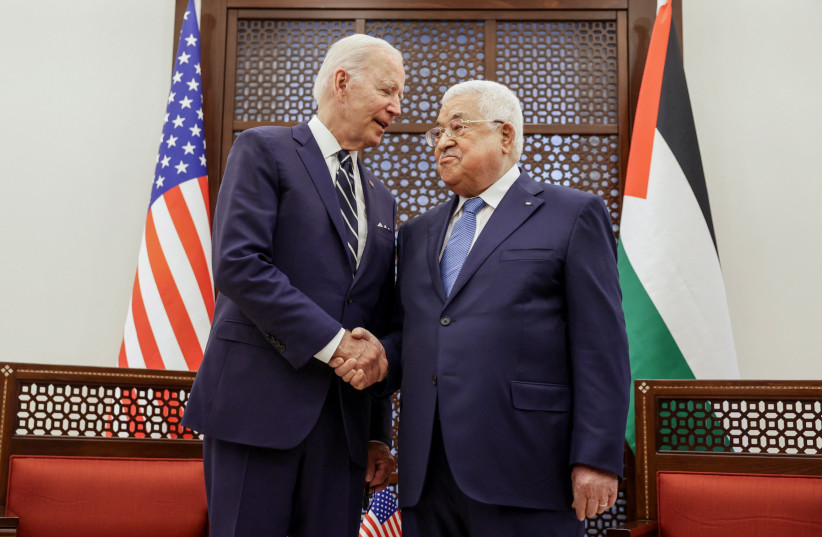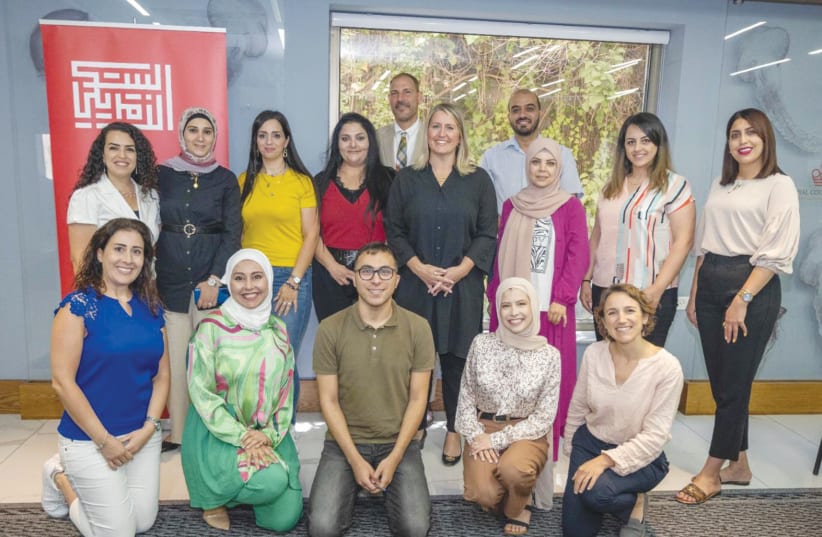The White House announced on July 14 that new contributions to support the Arabs of the Palestinian Authority will total $316 million, on top of the more than half a billion dollars the US already had provided the PA when the Biden Administration restored funding that the Trump administration had held up. That’s a lot of money.
Furthermore, in late August, two new Middle East Partnership for Peace Act (MEPPA) grants were announced. The Peres Center for Peace is to receive over $2 million to support Israeli and Palestinian health sectors, separately I presume, and $5 million to Appleseeds, based in Ramle, to help “young Israeli and Palestinian professionals learn technology-based skills for career development.”
Appleseeds promotes a vision for Israel of technological equality for all by “bridging Israel’s growing Startup Nation to underserved communities in Israel’s social and geographic periphery.” I am not aware that it operates in the Palestinian Authority area or that “Palestinians” reside in Ramle.
And so, American government funds intended for the Palestinian National Authority are on the way, again. This is admirable and, if properly supervised, the quality of life of the residents in those areas will be improved. But are the Jewish residents included in the population demographic? Will they benefit? Are they not a part of the problem, so to say, and its solution?
How are the Jewish residents included, if they are?

It is unfortunate that the funding provided by the US and its agent organizations to those living in Judea and Samaria specifically ignores or discriminates against the Jewish residents in that same geographical area.
The USAID website says that it provided $110 million in 2021 and will provide over $133 million this year and almost $270 million next year. USAID claims it “empowers Palestinians to build thriving communities, promote inclusive development, and advance a viable two-state solution.” Could perhaps that “empowering” be actually “advancing” Palestinian Authority incitement, anti-Jewish propaganda (“50 holocausts,” for one) and even terror infrastructure? There is, however, a more basic issue.
If there is to be a two-state solution, there needs to be two peoples involved. At the moment, over 15% of the population of Judea and Samaria is Jewish. Are they involved in the programs the above funds are assisting? Are there specific programs in which Arabs and Jews residents there participate? Should they be? And if they are not, why?
I had the opportunity recently to engage with an aide to a member of the House Appropriations Committee and I raised the issue, pointing out that getting the two populations to work together on non-political concerns and interests could possibly lead to a coexistence breakthrough and ultimately, achieve the goals of the programs.
I checked the website of the Palestinian Affairs Unit, the former east Jerusalem American Consulate under another name. The embassy-sponsored programs are, indeed, separate. Oddly, many of that office’s Facebook posts are in Hebrew translation.
I learned that 1,113 students “in the West Bank and Gaza” participated in the 18-month curriculum of the English Access Microscholarship (Access) Program, which provides a foundation of English language skills to youngsters from economically disadvantaged communities. However, only Palestinian Authority residents can benefit.
There are other such programs. America House Jerusalem, a unit of the embassy operating for the city’s Arabs, helps innovators with 3D modeling and animation programs. The American Palestinian Arts, Culture and Sports Initiative implements activities via direct exchange with American arts, film, music, dance, theater, cultural and/or sports professionals to “increase understanding and collaboration between Americans and Palestinians” and “to advance a comprehensive and lasting peace through a negotiated two-state solution [no other option exists?] to the Israeli-Palestinian conflict and the development of a vibrant, representative, and responsive Palestinian civil society.” Israelis and Jews of Judea and Samaria are not in the picture.
Jennifer Little from Terra Linda High School, San Rafael, California, thanks to the Fulbright Teacher Exchanges, spent six weeks with 50 teachers at College des Freres in Jerusalem and Bethlehem teaching English. She offered teachers, all Arabs, personalized one-on-one coaching to improve student-led learning in their classrooms.
In August, the Palestine Sports for Life envoy program benefited some 300 Palestinian youth ages 12-16 and 100 basketball coaches. On August 24, US sports envoys Edniesha “Coach Eddie” Curry and Stephen Howard completed a three-day basketball coach clinic and youth workshops in Jerusalem and the West Bank. The America House-Jerusalem held a CoolTech summer camp in the city. There is no America House in Ma’aleh Adumim or Ariel.
Other opportunities are the Advancing Palestinian Women’s Entrepreneurship Program and a Media Literacy Training seminar. In addition, there was a joint dance show in Bethlehem between Palestinian and American dancers that was preceded by a joint workshop that seemingly excluded Jews.
FROM THE language employed, the goal of these programs is solely to “increase understanding and collaboration between Americans and Palestinians” only. The eligible primary applicants for grant funding must be not-for-profit Palestinian and/or American organizations working with Palestinians in Jerusalem, the West Bank and/or Gaza.
To improve the relationships between “Palestinian-Israeli/Jewish residents” is outside the purview of the initiative? They cannot be funded?
There are staff visits, but only to Palestinian Authority locations. At the end of July, the US Office of Palestinian Affairs (OPA) chief George Noll was in Bethlehem. On August 3, he was in Ramallah.
Is all this helping peace?
The majority of these distributed funds are under the framework of the Nita M. Lowey Middle East Partnership for Peace Act of 2020, which also authorized $250 million of funding over the following five years for its implementation. The legislation has two tracks: (1) the People-to-People Partnership for Peace Fund to “help build the foundation for peaceful co-existence between Israelis and Palestinians and for a sustainable two-state solution” and (2) the Joint Investment for Peace Initiative to “carry out projects that contribute to the development of the Palestinian private sector economy in the West Bank and Gaza”.
All these programs are necessary and worthy on the most basic level. As for the additional goal of promoting peace and co-existence by a third-party funder, that would be best served, even if at a secondary stage, by finding ways of getting people together.
Start with sports, music and other non-political activities. Get people to talk to each other and learn about each other. Break barriers and ignorance and unfamiliarity. Breed familiarity and consciousness of the other. Reduce animosity and violence between people on a human-to-human level.
Only one population sector residing in the same geographic area is being designated as eligible for US funding that ostensibly promotes a political solution for a shared problem. Besides the inherent discrimination, is that practical and goal-serving? If there is no mixing and no mingling, what will that lead to?
If that is what the US wants, there will be no coexistence, no empathy, no cooperation and no compromise, no solution and no peace.
The writer is an analyst and opinion commentator on political, cultural and media issues.
